Introduction
The development of energy projects is significantly influenced by land services, which play an essential role in acquiring the necessary land and rights-of-way. These services encompass various activities, from site selection and land use negotiation to navigating complex legal and regulatory frameworks. Compliance with acts such as the National Environmental Policy Act (NEPA) and state versions like CEQA often leads to considerable delays, adding years to project timelines due to regulatory hurdles and compliance costs.
Securing appropriate land is crucial to mitigating these delays and reducing costs, but the process is fraught with environmental and legal challenges. For example, in Massachusetts, solar development has led to significant land destruction and CO₂ emissions, highlighting the need for a balanced approach that addresses both environmental impact and the climate crisis.
Innovative solutions are emerging despite these challenges. Solar projects on desert land have a lower environmental impact compared to coal mining, but regulatory complexities still pose significant delays. The permitting approval for new solar projects in the U.S. can take years, with grid interconnection taking even longer.
Addressing these regulatory challenges requires both technological and legal innovation. As California aims for 100% renewable energy by 2045, it faces unique challenges, such as the 'duck curve,' requiring advancements in battery energy storage and offshore wind deployment. Effective land services are crucial for overcoming these challenges and ensuring the timely and cost-effective implementation of energy projects.
The Role of Land Services in Energy Development
'Territorial services are essential in the advancement of energy initiatives by aiding in the procurement of required properties and rights-of-way.'. These services encompass a broad range of activities, including site selection, negotiation for property use, and compliance with complex legal and regulatory frameworks. For instance, the National Environmental Policy Act (NEPA) and state versions like CEQA often impose significant delays, adding 2-6 years to timelines due to compliance costs and regulatory hurdles.
Securing the appropriate space for energy projects is crucial to minimize delays and reduce costs. However, the process is often complicated by ecological concerns and legal obstacles. For instance, in Massachusetts, more than 5,000 acres of natural and agricultural areas have been ruined for solar development since 2010, resulting in the release of over half a million metric tons of CO₂. This emphasizes the necessity for a balanced method that takes into account both the ecological effects and the urgency of the climate crisis.
Despite these challenges, innovative solutions are emerging. 'Solar development on desert land, for instance, has less environmental impact compared to other forms of power generation like coal mining.'. However, each new solar project in the U.S. typically requires 2-5 years just for permitting approval, with grid interconnection taking up to 10 years due to regulatory complexities.
Addressing these regulatory challenges requires both technological and legal innovation. As California moves closer to its objective of attaining 100% dependence on renewable sources by 2045, the state encounters distinct challenges like the 'duck curve,' which illustrates the disparity between electricity demand and available solar power during the day. Battery power storage and offshore wind deployment are crucial to tackling these issues, but the legal and regulatory frameworks must evolve to enable these advancements.
In summary, although territorial services serve a vital function in the development of power initiatives, addressing the regulatory and ecological obstacles is necessary for the prompt and economical execution of these undertakings.
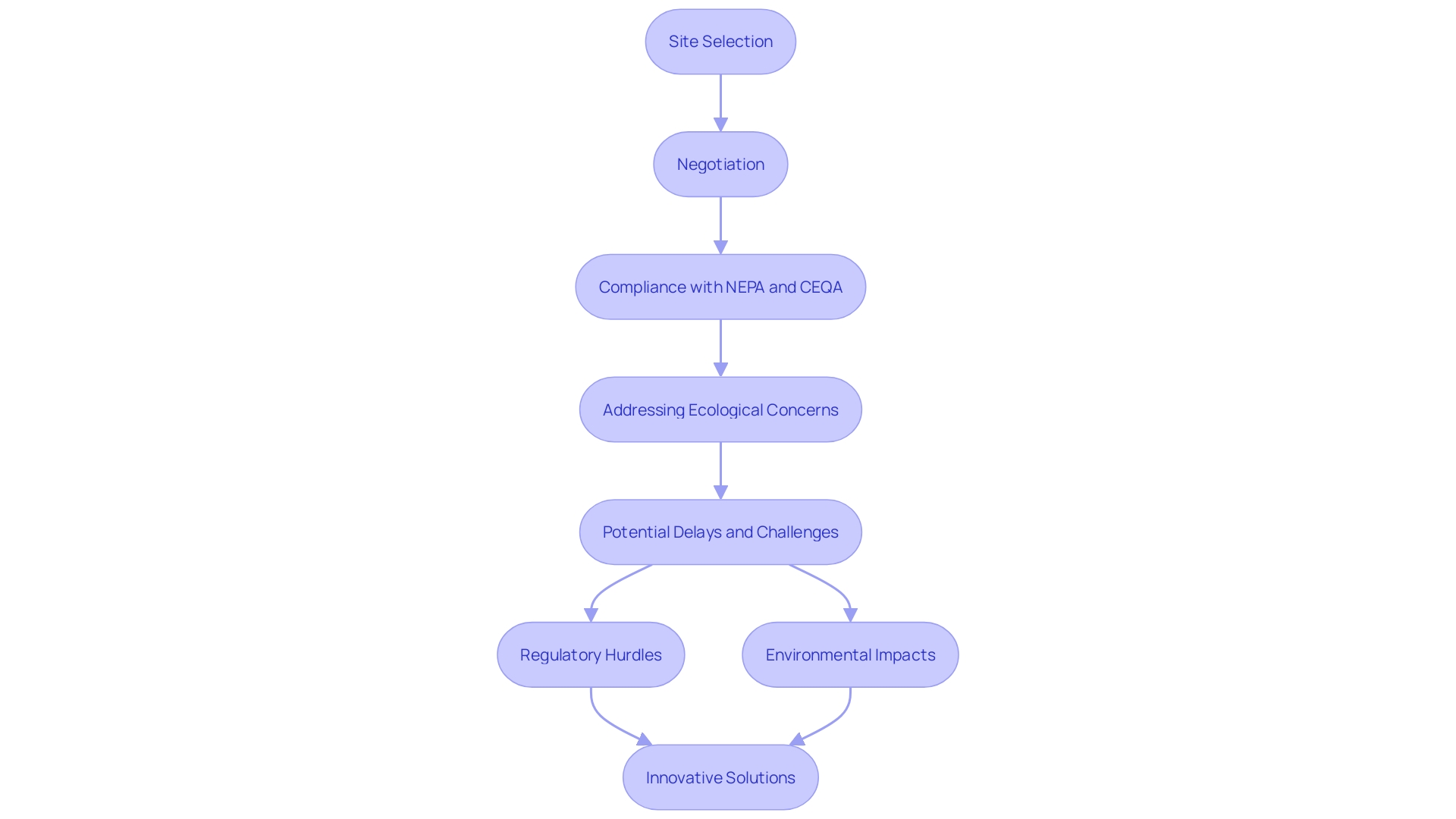
Key Considerations for Land Acquisition in Renewable Energy Projects
When obtaining terrain for sustainable power initiatives, numerous important factors must be considered. The appropriateness of the terrain for the planned power application is vital. For instance, the Meanguera del Golfo initiative in El Salvador showcased the significance of choosing terrain that can accommodate innovative clean power solutions to enhance local electricity grid dependability. Proximity to existing infrastructure is another vital factor, as showcased by the Lompoc wind farm, which benefits from its topography and wind direction.
Furthermore, the potential impact on local communities and environments cannot be overlooked. 'Sustainable initiatives, such as the solar-plus-storage initiative in the Gulf of Fonseca, not only aid in decarbonization but also strengthen the resilience of local communities by promoting economic and social development.'.
Comprehending market conditions and property values is crucial for successful negotiation and acquisition strategies. 'As sustainable resource initiatives encounter distinct obstacles such as geopolitical threats, supply chain constraints, and price fluctuations, remaining aware of these factors can greatly impact the effectiveness of property acquisition endeavors.'.
In summary, careful consideration of land suitability, infrastructure proximity, community impact, and market conditions is imperative for the successful acquisition of land for renewable initiatives.
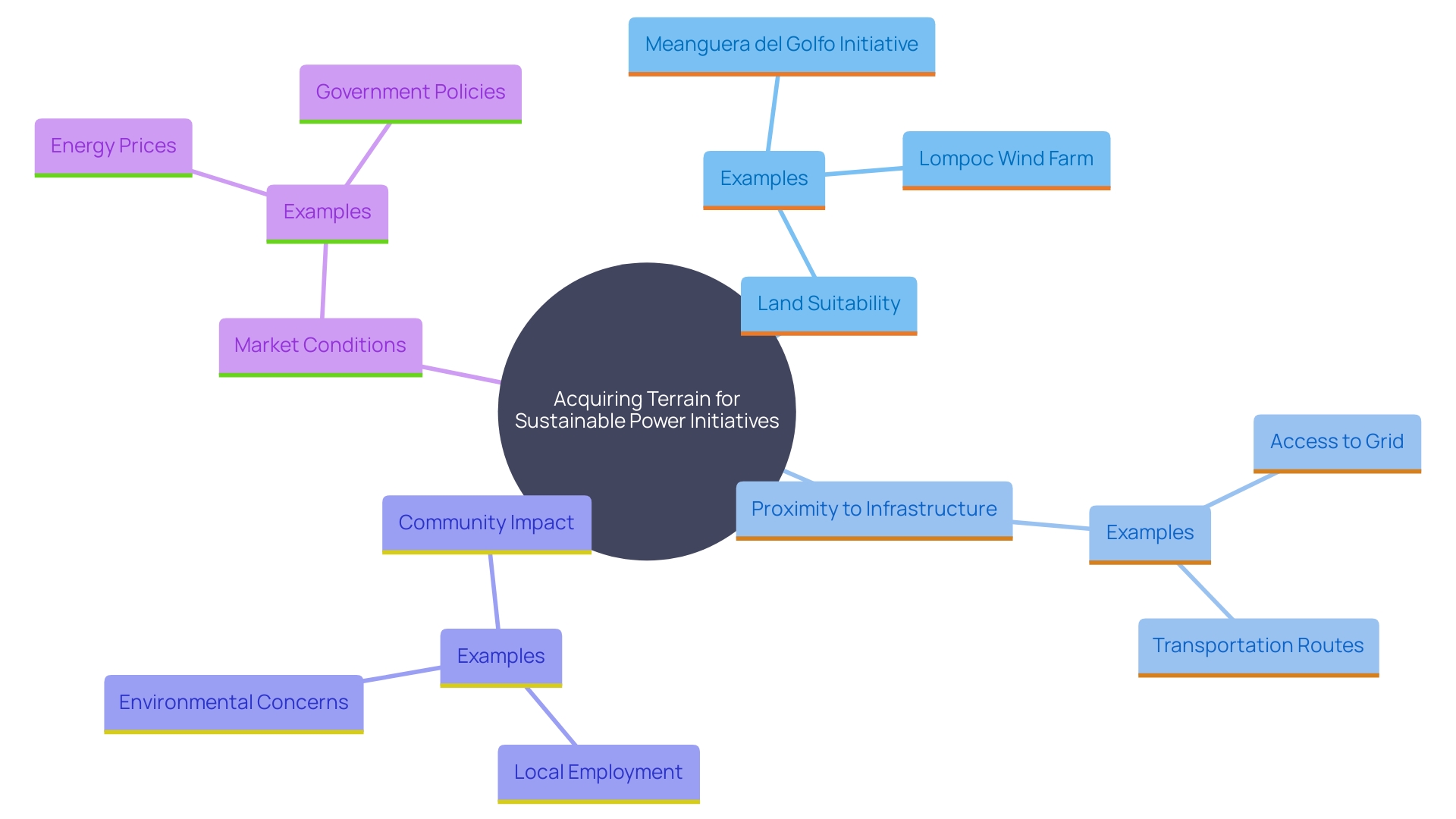
Challenges in Land Acquisition for Energy Projects
'Land procurement for power initiatives frequently poses complex difficulties.'. Navigating complex legal frameworks, such as the National Environmental Policy Act (NEPA) and state versions like CEQA, can significantly slow down development, adding 2-6 years of delay and high compliance costs. This legal landscape, while intended to promote environmental protection, often complicates the process for developers.
Addressing conflicting stakeholder interests is another significant hurdle. Renewable power initiatives frequently create clashes between private landowners and developers. As Meghan Dawson McElvy points out, the rapid rise in renewable power generation, particularly in wind and solar, has increased the demand for transmission lines, further intensifying these disputes.
Community opposition is a pervasive issue. Numerous stakeholders, such as local inhabitants and Indigenous Nations, have legitimate worries regarding the design and placement of renewable power installations. Effective resolution of these concerns is crucial, as inadequate handling can severely delay or block development.
Environmental concerns and zoning regulations add another layer of complexity. These regulations require meticulous planning and negotiation to ensure compliance and address any potential ecological impacts. The United States has seen dramatic growth in renewable energy generation, with carbon capture, use, and sequestration (CCUS) gaining prominence. However, the need for careful planning and negotiation remains paramount to overcome these regulatory and environmental challenges successfully.

Strategies for Effective Land Acquisition
Effective territory acquisition strategies require meticulous planning and robust stakeholder engagement. Establishing transparent communication channels with landowners and local communities is paramount to building trust and facilitating negotiations. For instance, Inicio's Eywa algorithm identifies optimal locations for solar power plants, balancing renewable energy production with local agricultural activities and adhering to numerous constraints such as town planning and protected areas.
Utilizing advanced technologies, such as GIS mapping and AI-driven title research, significantly enhances the efficiency and accuracy of land assessments. Tools like these facilitate informed decision-making by providing insights into various environmental factors, thereby streamlining the acquisition process. This approach is exemplified by geospatial initiatives that empower communities with localized data, fostering sustainable urban development and public health improvements.
Furthermore, addressing opposition to renewable power facilities is crucial. Research indicates that many stakeholders have legitimate concerns regarding the design and location of these initiatives. Successful involvement of the community and teamwork are crucial to address disputes and foster agreement, guaranteeing the effective execution of renewable initiatives.
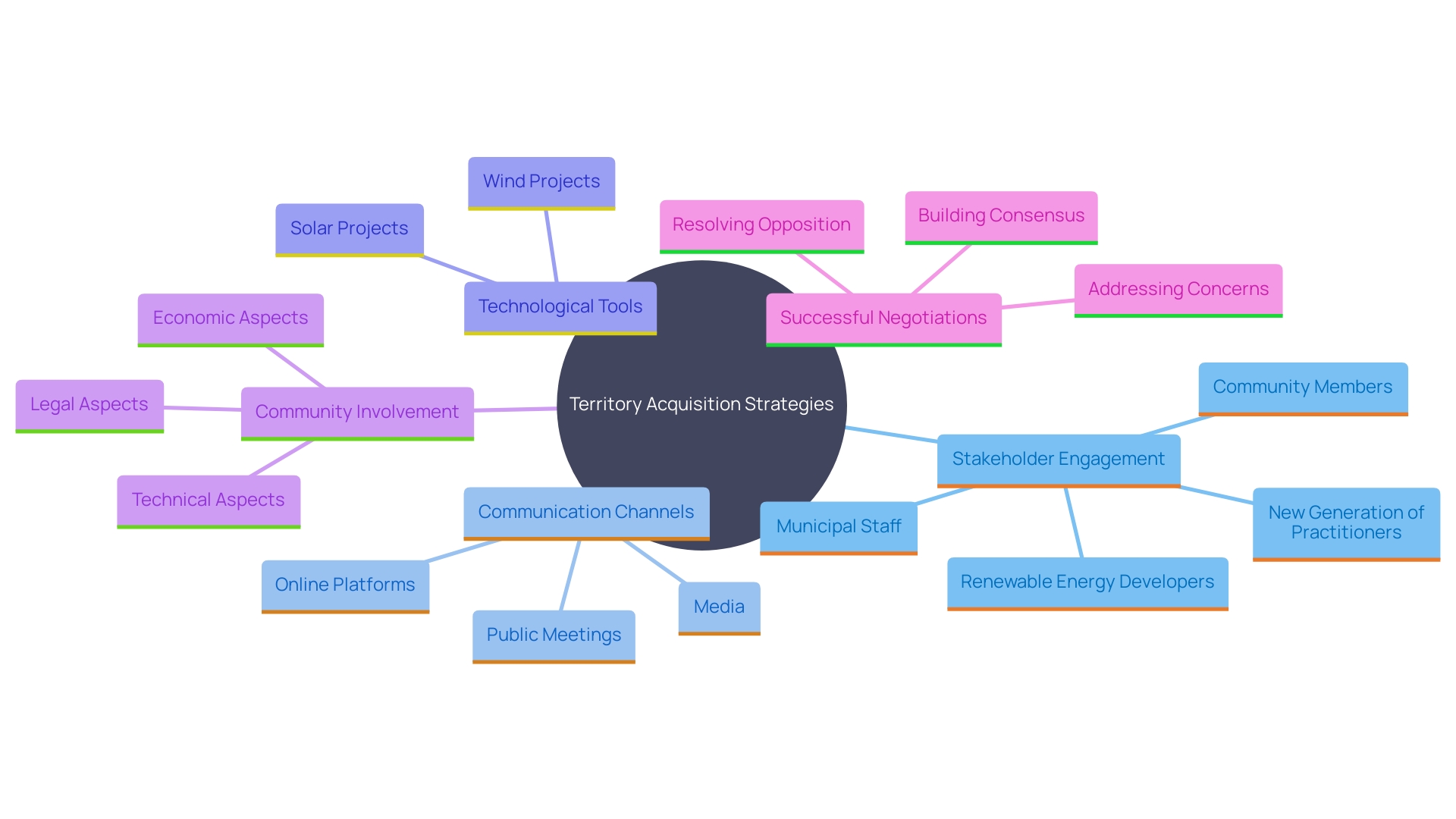
The Importance of Title Research and Mapping
Efficient title investigation and accurate GIS mapping are essential in the property acquisition process for energy initiatives. Comprehensive title research is essential to identify and verify all property rights, thus minimizing the risk of disputes and legal challenges. 'This is particularly crucial for initiatives like solar power plants, which must navigate numerous local constraints, including town planning and protected areas, as evidenced by Inicio's adherence to strict conditions to avoid disrupting local agricultural activities.'.
Meanwhile, GIS mapping provides invaluable visual representations of property parcels, assisting project developers in evaluating site suitability and recognizing potential constraints. The application of geospatial tools, similar to those used in Montreal's neighborhood health tool, enables informed decision-making by providing insights into various environmental factors. This technology's role in fostering sustainable development is further highlighted by the use of Mapillary imagery by students in Akure, Nigeria, to validate infrastructure conditions.
'The integration of these technologies ensures a more streamlined and transparent land acquisition process, aligning with the broader goal of enhancing renewable power infrastructure.'. According to specialists like Righetti, who concentrates on subsurface property law and administrative regulation of resource development, such meticulous planning and data utilization are crucial to the successful deployment of low-carbon technologies. As the global power transition continues, leveraging these tools will be key to overcoming the formidable challenges ahead, ensuring that renewable power projects can proceed with minimal legal and logistical setbacks.
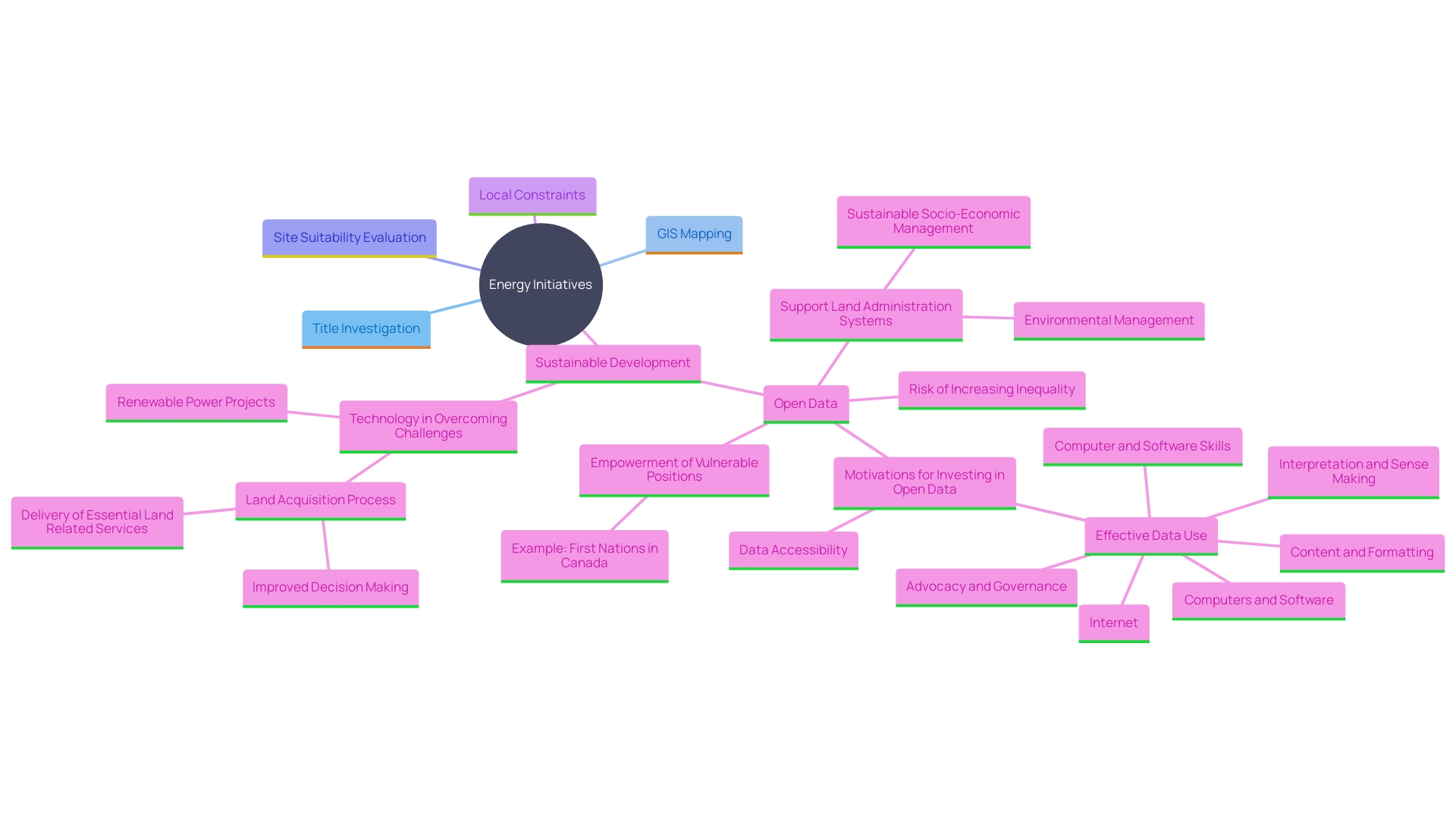
Navigating Regulatory Compliance and Community Engagement
Managing regulatory adherence is essential for effective property acquisition, especially in the power industry. This involves a deep understanding of local, state, and federal regulations governing land use and environmental protection. The complexity of these regulations often requires strategic planning and expert consultation to ensure adherence. As Jeff Marootian, Principal Deputy Assistant Secretary for Efficiency and Renewable Resources at the U.S. Department of Energy, noted, "We have an unprecedented opportunity to bring the economic, health, and climate benefits of clean resources to people across the nation." However, the regulatory landscape varies widely across the United States, necessitating tailored approaches for each jurisdiction.
Engaging with the community is equally vital. Research by RMI highlights the importance of genuine two-way engagement between developers and local stakeholders. Past failures in community engagement often stem from inadequate representation and communication, leading to persistent opposition. Effective community engagement should involve transparent communication, active listening, and fostering trust through consensus-building.
Public forums and structured community conversations, like those facilitated by the Energy Communities IWG's new Navigator program, provide platforms for addressing community concerns and building support. These forums assist stakeholders, including municipal staff and community members, navigate the economic and social changes linked to transitions in power. By addressing legitimate concerns and working together, developers can reduce opposition and encourage acceptance, ultimately ensuring smoother property acquisition processes.
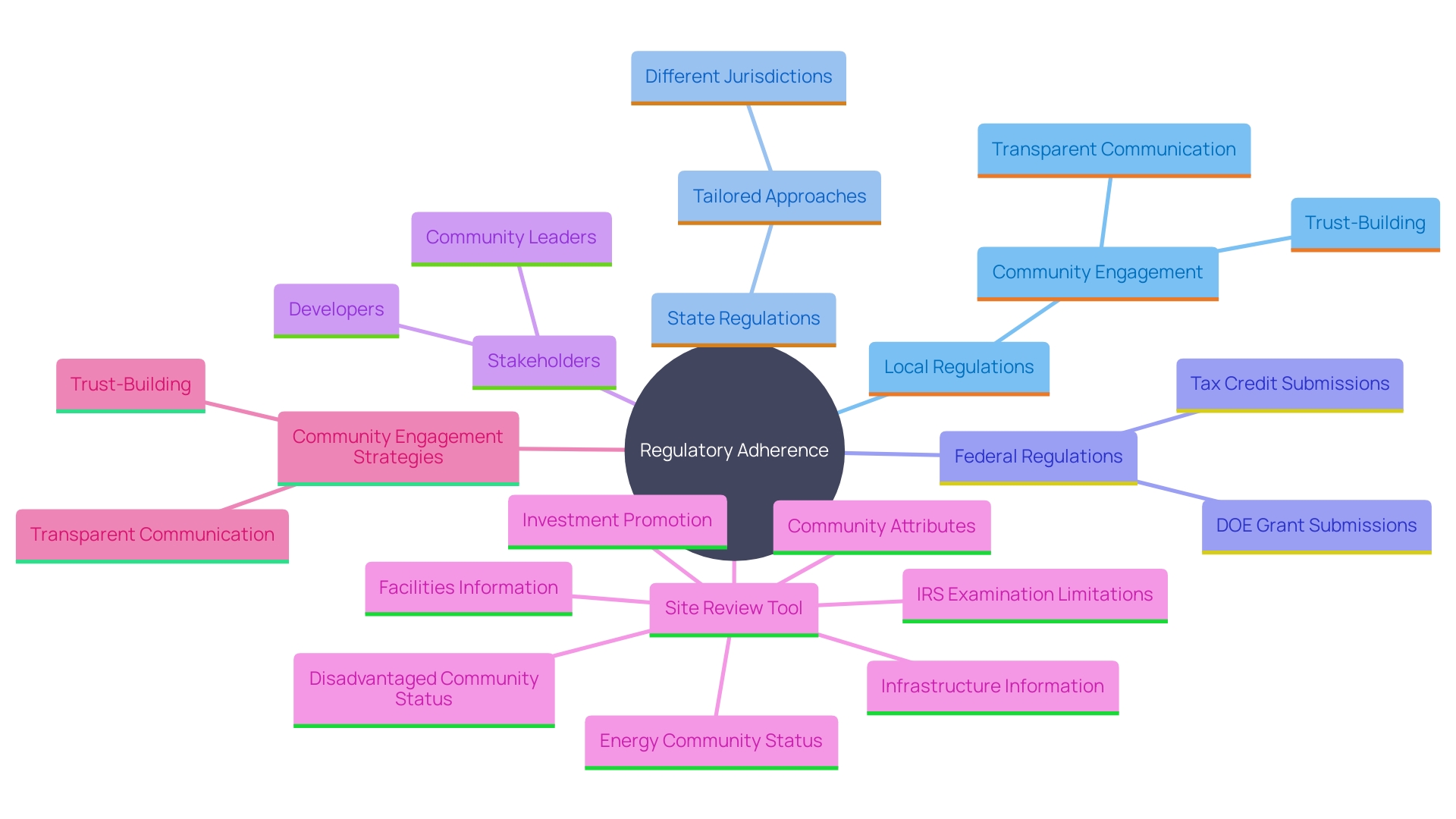
Environmental Considerations and Best Practices for Right-of-Way Acquisition
Environmental considerations are crucial in the land acquisition process for energy developments. Carrying out thorough ecological evaluations is crucial to recognize and lessen possible effects on wildlife, ecosystems, and natural resources. For instance, infrastructure projects like the expansion of railways in Sweden have been mandated by the government to assess connectivity impacts in protected areas. This ensures that the ecological characteristics and movement behavior of species are considered, benefiting the overall process.
Best practices involve implementing strategies to minimize adverse effects and ensure compliance with ecological regulations. The Kunming-Montreal Global Biodiversity Framework, aimed at halting and reversing biodiversity loss by 2030, underscores the importance of integrating nature-positive infrastructure development. This includes thorough due diligence on environmental and social governance to address cumulative impacts and integrate public health, environmental justice, and climate priorities in decision-making.
Moreover, the need for trusted partners who understand the technical requirements, permitting processes, and stakeholder concerns is highlighted by developers. This trust and credibility are essential for the successful implementation of clean power projects, such as those involving green hydrogen and renewable resources, which are projected to see significant investments and growth in the coming decades.
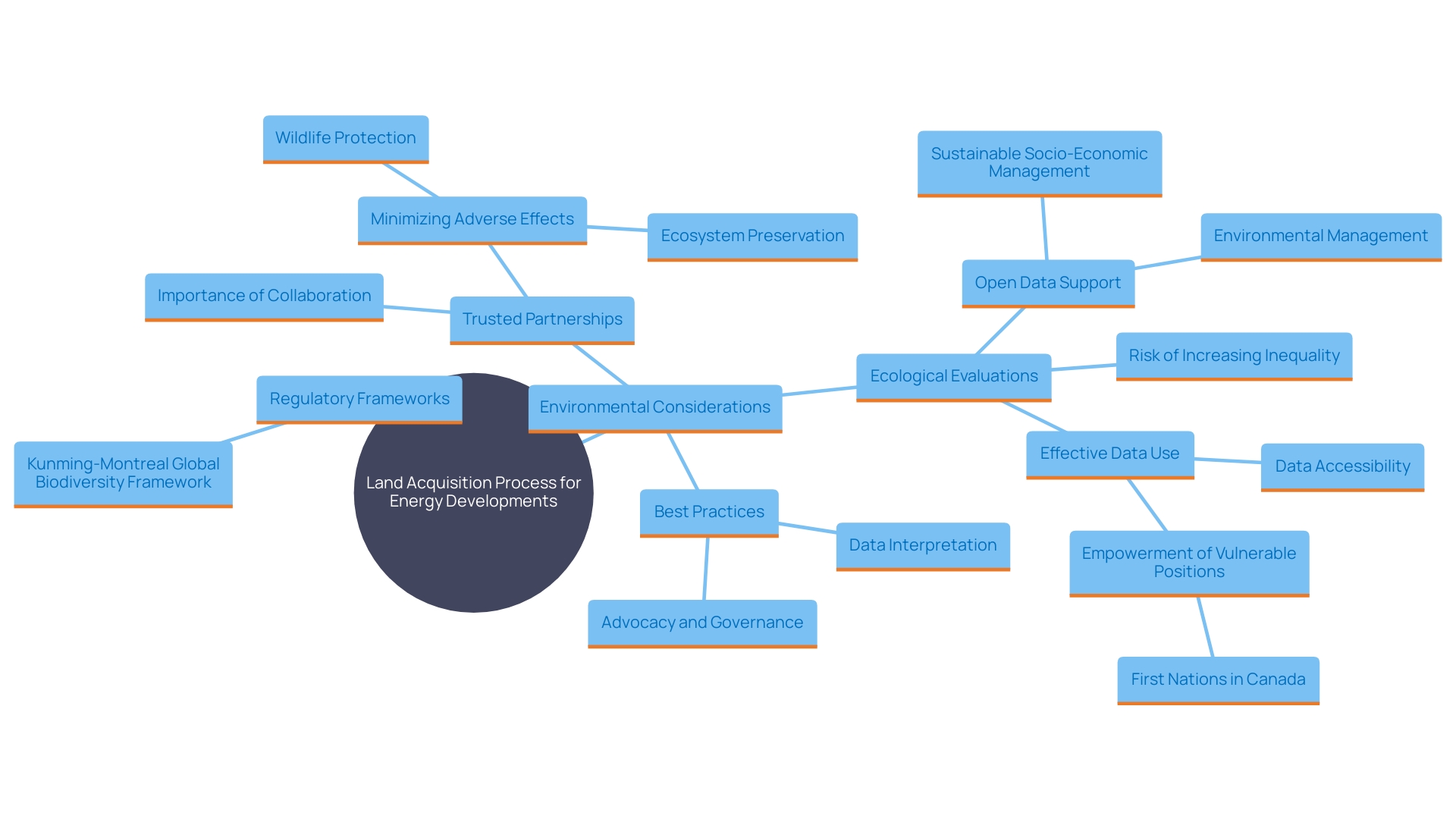
The Future of Energy and Land Services
'The future of resources and property services is being transformed by technological innovations and a rising focus on sustainability.'. 'The integration of renewable power sources, such as bioenergy, biogas, hydrogen, and e-fuels, is driving the need for more efficient land acquisition practices.'. The Global Status Report (GSR) highlights the pivotal role these renewables will play in meeting global power demand by 2030, particularly in decarbonizing the industry, building, and transport sectors.
As the energy sector adapts to evolving regulations and heightened community expectations, innovative approaches become crucial for successful project development. The LAND-at-scale program, funded by the Netherlands Ministry of Foreign Affairs, exemplifies these innovative interventions. By concentrating on equitable and just tenure security, the program aims to enhance sustainable use of territory and natural resources while reducing conflicts and competing claims. 'Climate change, now acknowledged as one of the globe's most urgent challenges, is intricately connected to usage of territory and governance.'. Projects within the LAND-at-scale program are selected based on their potential to improve climate adaptation, underscoring the importance of integrating climate resilience into land governance strategies.
These developments are supported by collaborative efforts from global organizations. For instance, Ipieca, the worldwide oil and gas association, has played a key role in enhancing environmental and social performance throughout the transition of resources. 'Commemorating 50 years of influence, Ipieca persists in providing practical tools and knowledge exchange platforms to handle vital resources such as water, which is essential throughout the lifecycle of power initiatives.'.
The evolving landscape of power and land services requires adaptive strategies and continuous innovation. By leveraging comprehensive programs and collaborative efforts, the industry can navigate the complexities of modern energy demands while promoting sustainability and resilience.
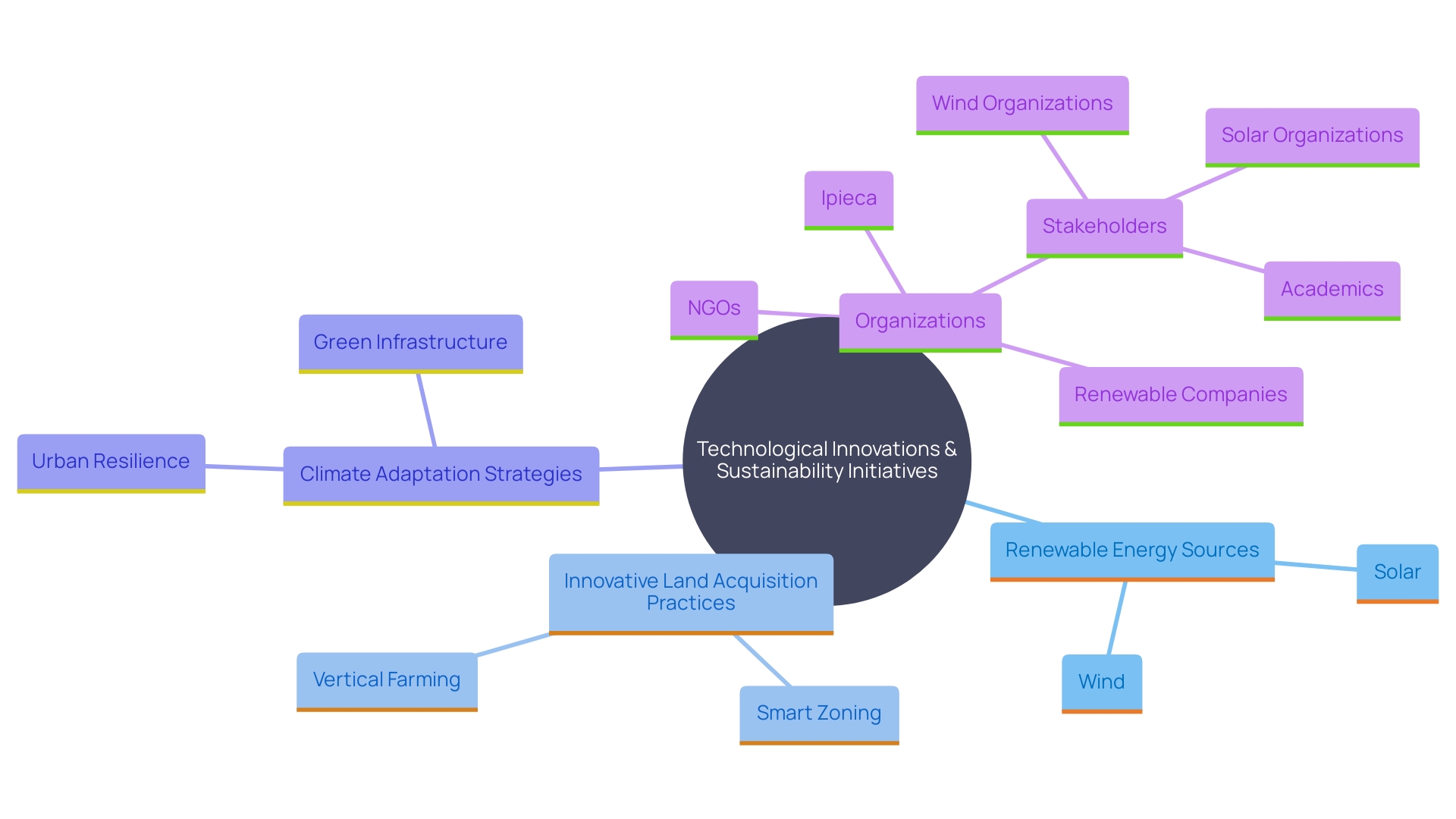
Conclusion
The complexities of land acquisition for energy projects underscore the critical role of effective land services in facilitating timely and cost-efficient development. Navigating the intricate legal and regulatory frameworks, such as NEPA and CEQA, presents significant challenges that can extend project timelines by several years. These hurdles necessitate a balanced approach that addresses environmental impacts while meeting the urgent demands of the climate crisis.
Innovative strategies and technologies are emerging to streamline the acquisition process. Utilizing advanced tools like GIS mapping and AI-driven research enhances the accuracy of land assessments and supports informed decision-making. Furthermore, fostering transparent communication with local communities and stakeholders is essential for building trust and mitigating opposition, ensuring that renewable energy projects can proceed with minimal delays.
As the energy landscape continues to evolve, the importance of incorporating environmental considerations into land acquisition processes cannot be overstated. Comprehensive assessments and adherence to best practices will be vital in minimizing adverse impacts on ecosystems and communities. The future of energy development hinges on the ability to adapt to changing regulations and community expectations while leveraging technological advancements to promote sustainability and resilience in land services.




